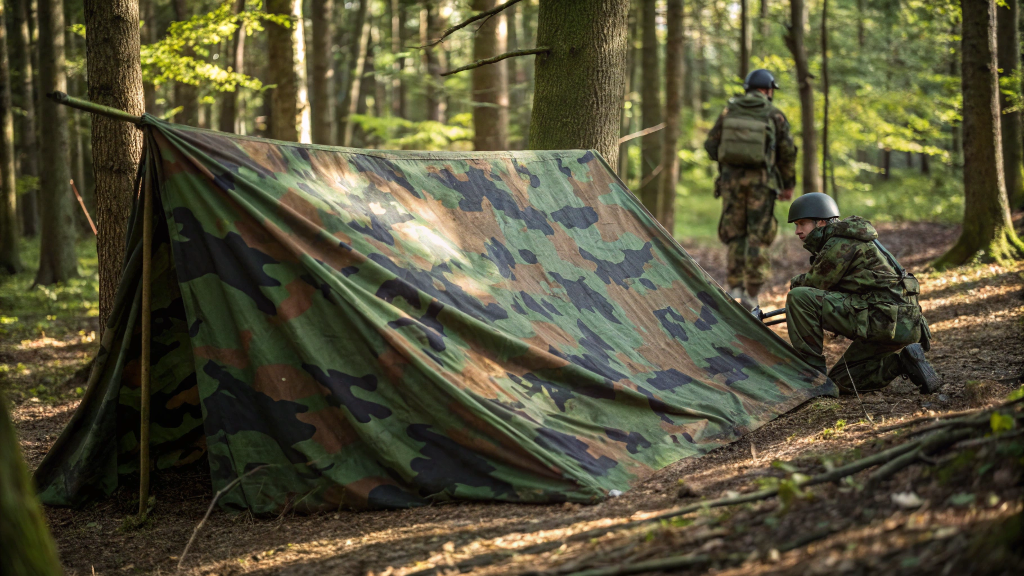When it comes to outdoor protection and camouflage, tarnplanen are an indispensable tool. These strong fabric covers have been widely used in military, camping, hunting, and various outdoor activities to provide concealment and shelter. But what exactly are tarnplanen, and why have they become so popular? This article explores everything you need to know about tarnplanen, from their purpose and materials to practical uses and tips for selecting the right one.
What Are Tarnplanen?
The term tarnplanen originates from German, combining “Tarn” meaning camouflage, and “Planen,” meaning tarpaulins or covers. Essentially, tarnplanen are heavy-duty fabric sheets designed to blend into natural surroundings while offering protection from the elements. They act as both a visual shield and a physical barrier against wind, rain, sun, and dust.
Unlike ordinary tarps, tarnplanen focus heavily on camouflage patterns and durability, making them suitable for tactical use or wilderness environments where stealth and resilience are essential.
Materials Used in Tarnplanen
The effectiveness of tarnplanen largely depends on the fabric and materials used in their construction. Commonly, tarnplanen are made from:
- Polyester or nylon fabrics: These synthetic fibers provide water resistance, quick drying, and strength.
- PVC coating: Some tarnplanen have an additional PVC layer for enhanced waterproofing.
- Ripstop weave: A grid pattern that prevents tearing, ensuring the fabric lasts through rough outdoor use.
- Camouflage print: Patterns that mimic forests, deserts, or other natural environments to aid concealment.
The combination of these materials creates a robust, lightweight, and weather-resistant cover that can endure extended outdoor exposure.
Practical Uses of Tarnplanen
Military and Tactical Applications
Tarnplanen have long been used by armed forces around the world to conceal equipment, vehicles, and personnel. Their camouflage design helps soldiers blend into the terrain, reducing visibility to adversaries. These covers also shield sensitive gear from environmental damage.
Camping and Outdoor Shelter
For campers and hikers, tarnplanen serve as multipurpose shelters or ground covers. They can be quickly set up as makeshift tents, rain covers, or sunshades. The durable fabric withstands wind and rain, keeping users dry and comfortable.
Hunting and Wildlife Observation
Hunters and wildlife photographers use tarnplanen to hide their presence from animals. The camouflage patterns help create natural blinds or hides, allowing observers to get closer without alarming wildlife.
Emergency and Disaster Relief
In emergency situations, tarnplanen can provide immediate shelter or protection for equipment and supplies. Their portability and ease of deployment make them valuable assets in disaster zones.
Benefits of Using Tarnplanen
- Camouflage: The main advantage of tarnplanen is their ability to blend with surroundings, helping avoid detection.
- Weather protection: These covers shield users and gear from rain, sun, wind, and dust.
- Durability: Made from tough fabrics, tarnplanen resist tearing and abrasion.
- Versatility: Tarnplanen can be used for various purposes — shelter, groundsheet, equipment cover, or privacy screen.
- Lightweight and portable: Most tarnplanen are easy to fold and carry, perfect for mobile use.
How to Choose the Right Tarnplanen
Selecting the ideal tarnplanen depends on your specific needs. Here are key factors to consider:
Size and Coverage
Tarnplanen come in many sizes, from small personal covers to large sheets for vehicles or campsites. Assess the area or items you want to cover to pick an appropriately sized tarnplane.
Camouflage Pattern
Choose a camouflage design that matches your environment. Forest, desert, snow, or urban patterns exist to optimize concealment in different settings.
Waterproofing and Breathability
If you expect heavy rain, opt for waterproof tarnplanen with coatings like PVC. However, breathability is important too, to prevent condensation build-up underneath.
Weight and Portability
For hiking or quick deployment, lightweight tarnplanen are preferable. For stationary use, heavier-duty options offer more durability.
Attachment Points and Features
Look for tarnplanen with reinforced eyelets, loops, or grommets to easily secure the cover with ropes or poles. Some models come with additional features like zippered openings or mesh windows.
Tips for Using Tarnplanen Effectively
- Always set up the tarnplanen to maximize camouflage—use natural foliage around to break outlines.
- Secure all edges tightly to avoid wind damage or movement.
- Combine multiple tarnplanen if you need larger coverage or multi-layered protection.
- Regularly inspect for tears or wear and repair promptly to maintain integrity.
- Store tarnplanen dry to prevent mildew and extend their lifespan.
Maintenance and Care of Tarnplanen
Proper maintenance can keep tarnplanen functional for many years. Clean dirt and debris with mild soap and water; avoid harsh detergents that can damage coatings. Allow the cover to air dry fully before folding to avoid mold. Store in a cool, dry place away from direct sunlight, which can degrade fabric over time.
Common Misconceptions About Tarnplanen
Some people confuse tarnplanen with ordinary tarps or plastic sheets. However, tarnplanen are specifically designed for camouflage and durability, making them superior for outdoor concealment. Additionally, while some may think tarnplanen are only for military use, their versatility makes them useful for civilians engaged in outdoor recreation or emergency preparedness.
Conclusion
Whether you are a soldier needing stealth, a camper seeking shelter, or a hunter requiring concealment, tarnplanen offer an effective solution combining durability and camouflage. Their strong fabric construction and weather-resistant properties make them essential gear for anyone spending time outdoors. By understanding the types, materials, and practical uses of tarnplanen, you can select the right cover to suit your needs and enjoy enhanced protection and discretion in nature.





